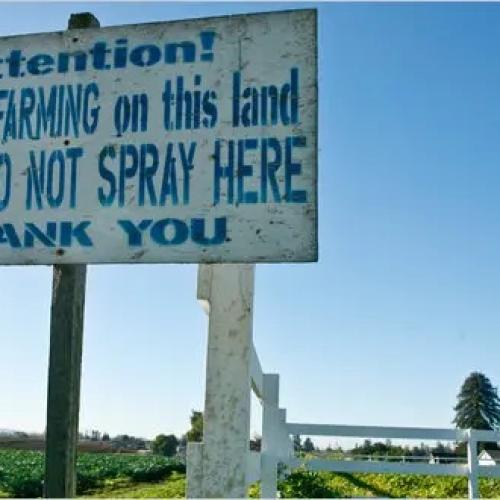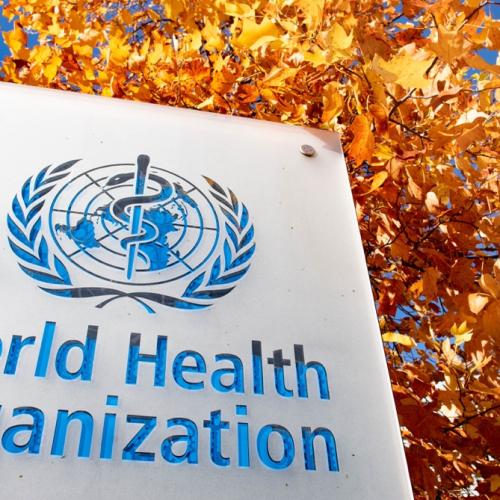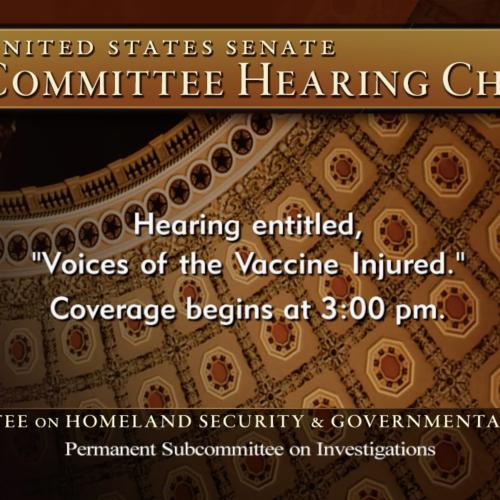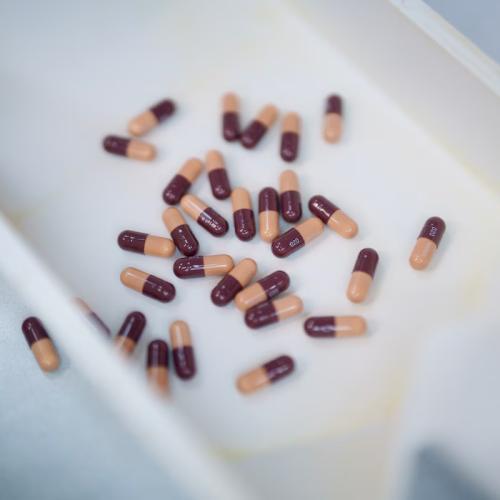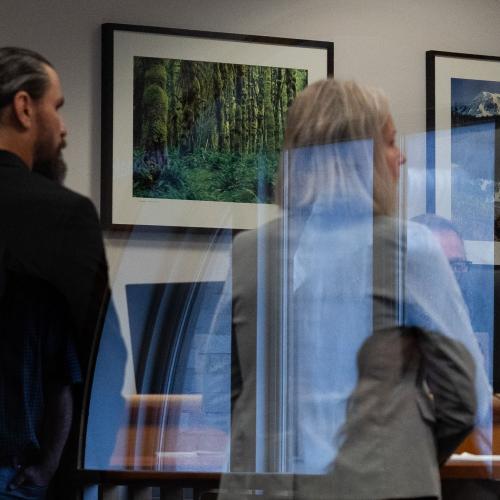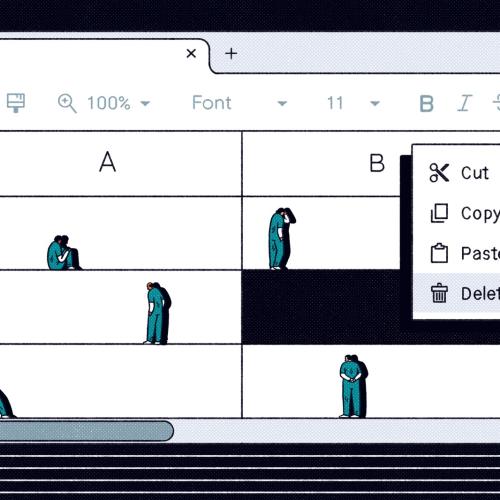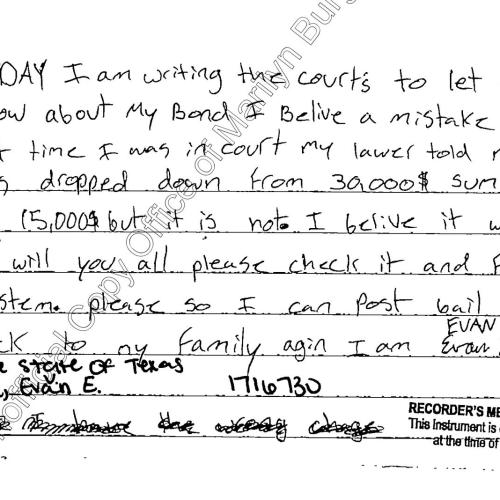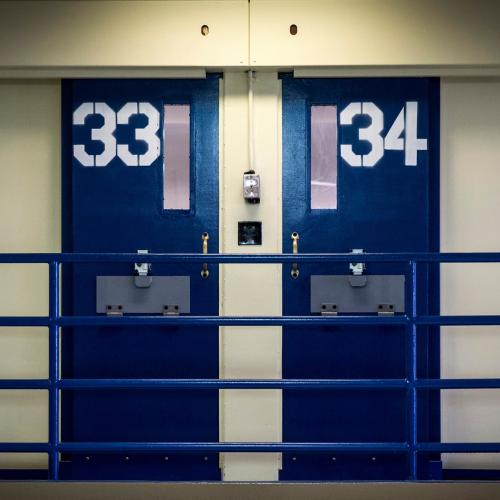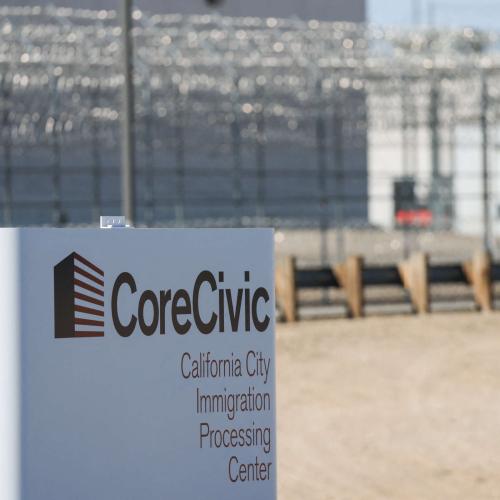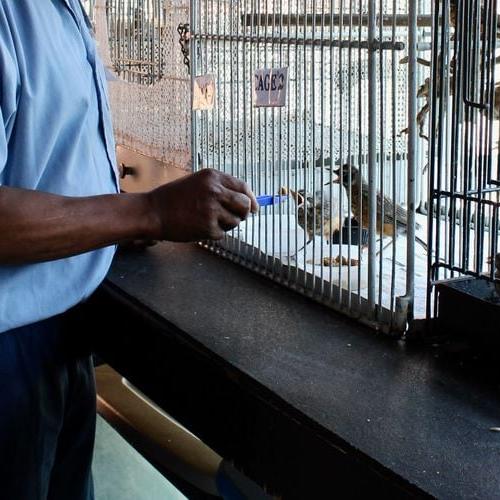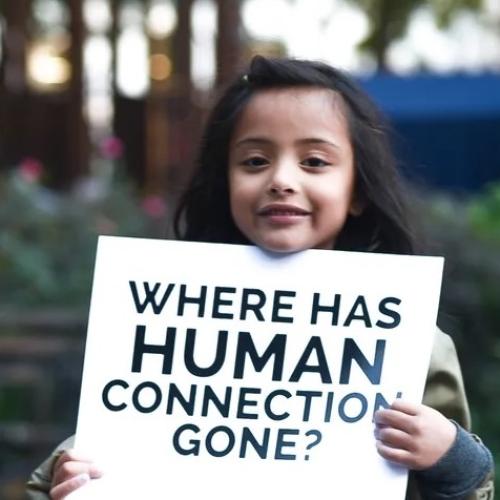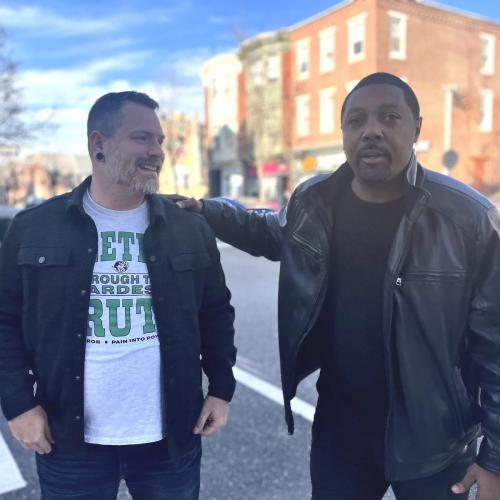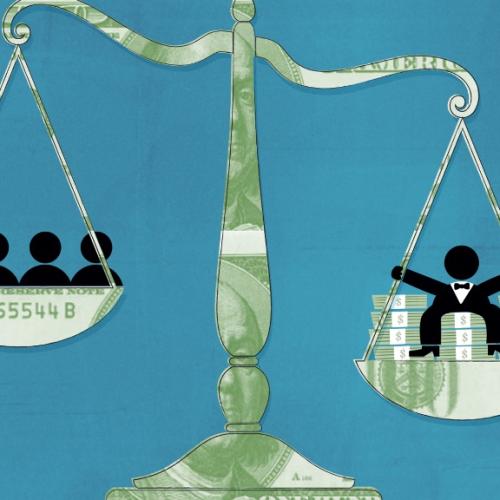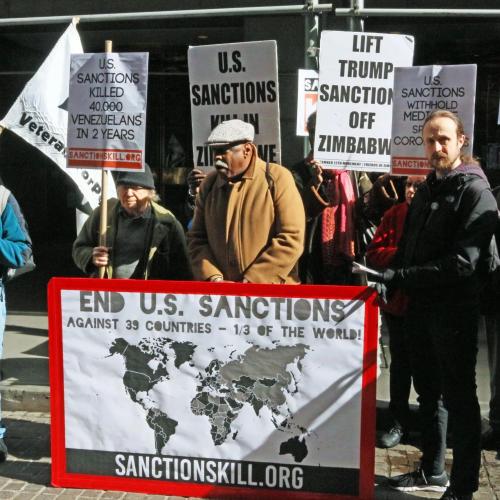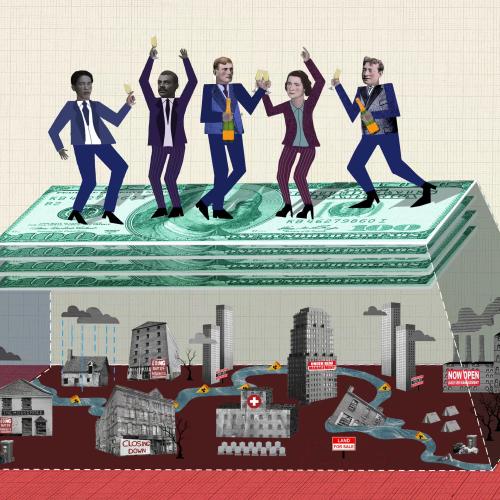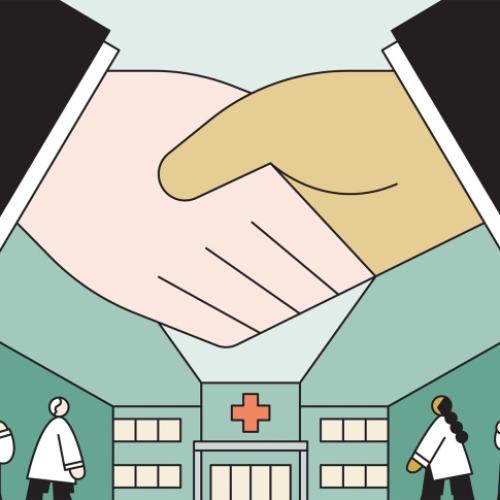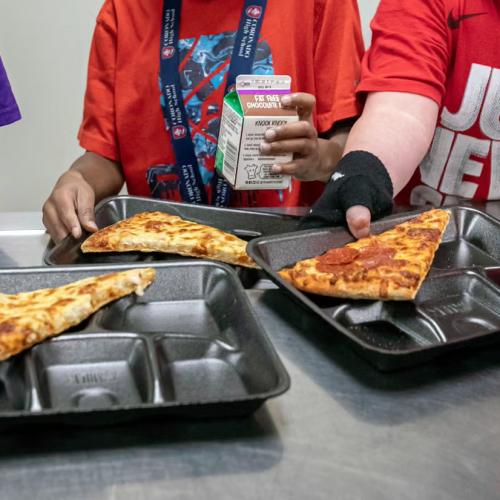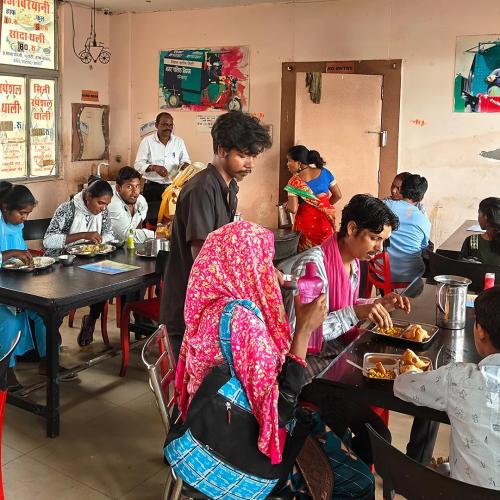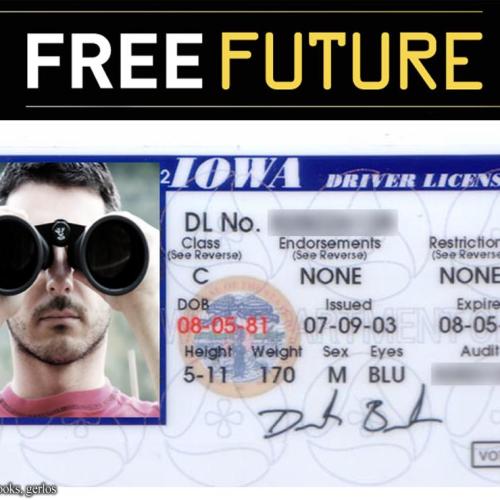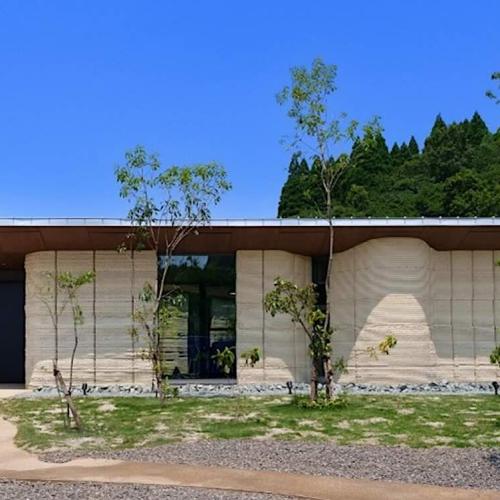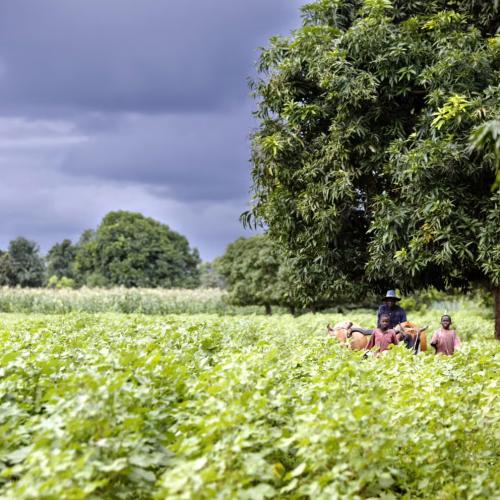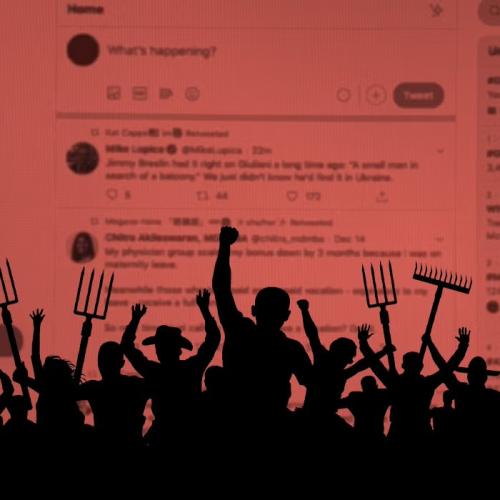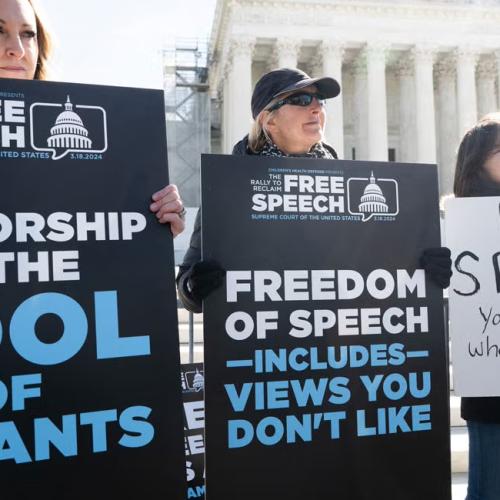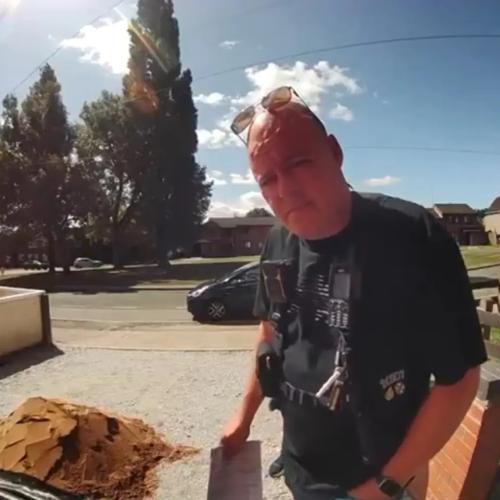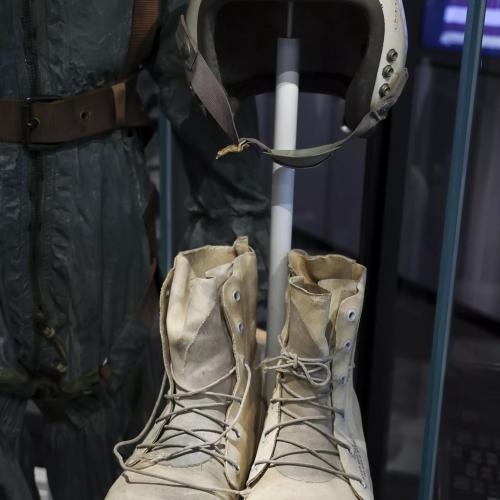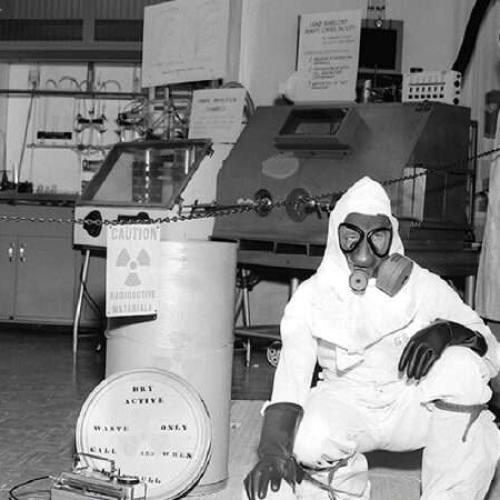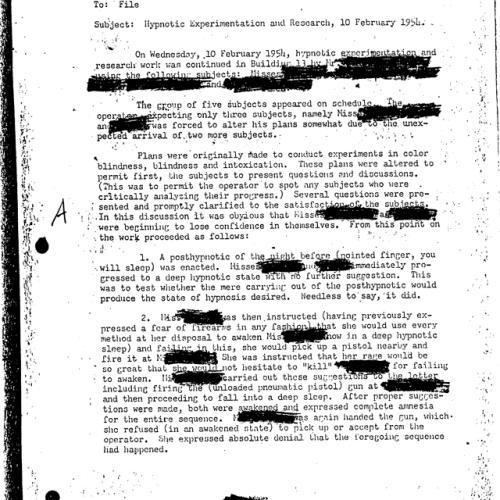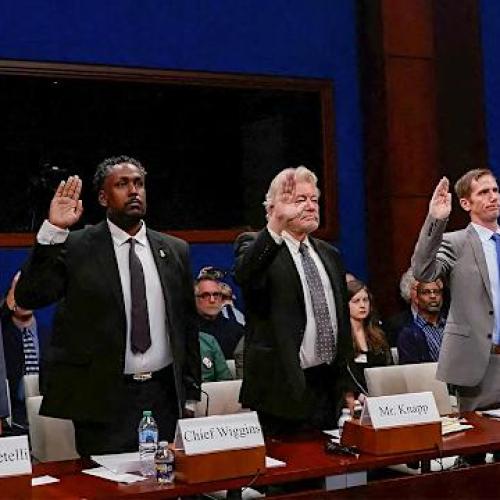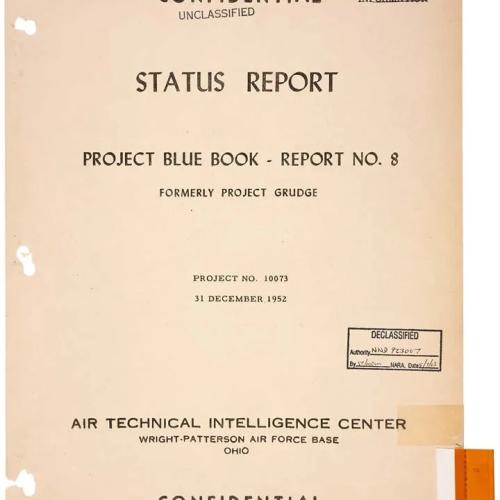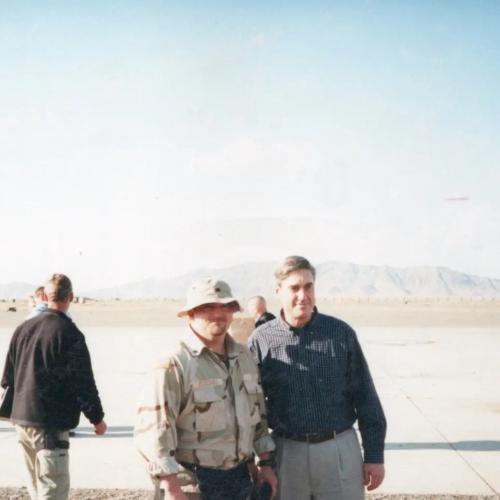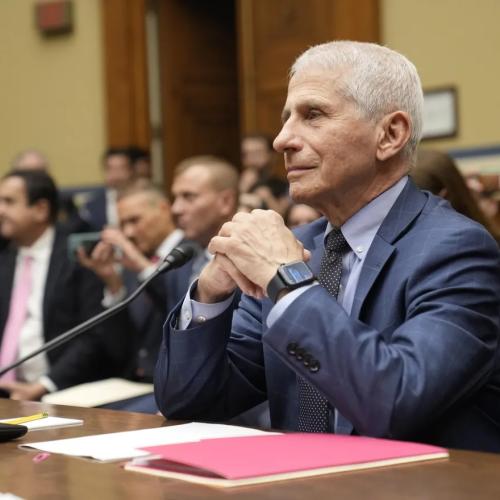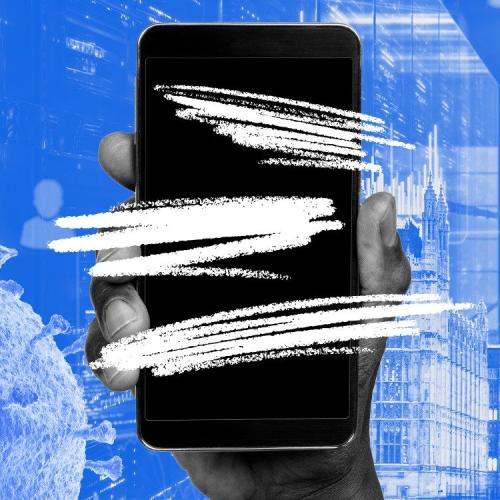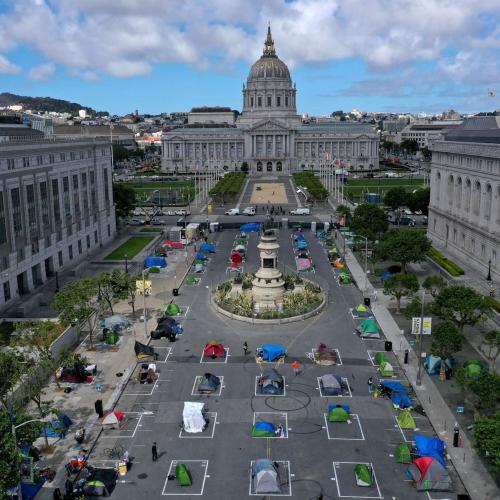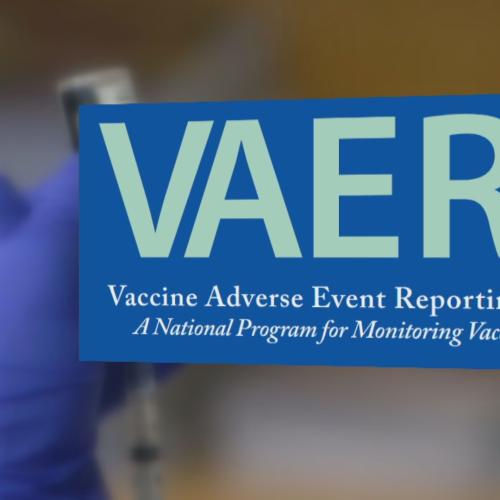Inspiring: Reimagining the Economy News Articles
Below are key excerpts of inspiring news articles on reimagining the economy from reliable news media sources. If any link fails to function, a paywall blocks full access, or the article is no longer available, try these digital tools.
For further exploration, delve into our Inspiration Center.
"Welcome to the Blockchain! Your voice is worth something," states a webpage of Steemit, the social network built on a blockchain that's now exploding with popularity. Steemit ... supports community building and social interaction through cryptocurrency rewards and a reputation or influence-based system, known as Steem Dollars and Steem Power. Ned Scott, CEO and co-founder of Steemit, told IBTimes: "If you think about the existing models - Facebook, Twitter, Instagram - these are platforms that invite people to come and do all this work so that their shareholders, who are not necessarily contributors make all this money. "Our platform is a cooperative version of a social network which is more intuitive, and a more shared, community-driven approach, and that's why our early user base is growing. We are completely open source." Steemit grew out of a long process set in motion by gifted developer and co-founder, Daniel Larimer. It evolved from the idea of a decentralised exchange ... to a later exploration of blockchain-based mutual aid and micro-insurance, with a forum added for users to interact and compare notes. It does away with traditional cryptocurrency barriers to entry, like having to go and buy coins at an exchange. Scott said everyone is rewarded one way or another. People who post content actually get rewarded [with Steem, a currency whose value] is split between tradability and reputation. Steem is currently the third most valuable cryptocurrency in the world.
Note: Unlike other social media platforms such as Facebook, Steemit is technically impossible to censor and is owned by everyone that uses it. Explore a treasure trove of concise summaries of incredibly inspiring news articles which will inspire you to make a difference.
Libraries arent just for books, or even e-books, anymore. In Sacramento, where people can check out sewing machines, ukuleles, GoPro cameras and board games, the new service is called the Library of Things. Services like the Library of Things and the Stuff-brary in Mesa, outside Phoenix, are part of a broad cultural shift in which libraries increasingly view themselves as hands-on creative hubs, places where people can learn new crafts and experiment with technology like 3-D printers. Last year, the Free Library of Philadelphia pulled together city, state and private funds to open a teaching kitchen, which is meant to teach math and literacy through recipes and to address childhood obesity. It has a 36-seat classroom and a flat-screen TV for close-ups of chefs preparing healthy dishes. Libraries are looking for ways to become more active places, said Kate McCaffrey of the Northern Onondaga Public Library, outside Syracuse, which lends out its garden plots and offers classes on horticulture. People are looking for places to learn, to do and to be with other people. The Ann Arbor District Library has been adding to its voluminous collection of circulating science equipment. It offers telescopes, portable digital microscopes and backyard bird cameras, among other things - items that many patrons cannot afford to buy. In Sacramento, each item in the Library of Things bears a bar code, since the Dewey Decimal System was not intended for sewing machines or ukuleles.
Note: Explore a treasure trove of concise summaries of incredibly inspiring news articles which will inspire you to make a difference.
Four years after the country let its debt-ridden banks fail, and as the country's growth looks set to far outpace the eurozone, [Iceland's president Olafur Ragnar Grimsson] said the decision not to save the banks was "the most difficult I ever had to make," but maintained it was the right one. "Allowing the banks to fail is one of the fundamental reasons Iceland is now in a strong recovery with respect to other European countries," he said. Now, according to Grimsson, "Iceland is better placed to benefit by maintaining our present position, rather than to let the EU speak on our behalf." The 69-year-old president pointed to Norway and Greenland -- two other Arctic economies and non-European Union members -- as role models. However, Grimsson said he was not sure whether Iceland's strategy with its banks could have been replicated by other countries with similar problems, such as Ireland. "Being part of the eurozone, they couldn't devalue their currency. But they could have adopted our policy with respect to the banks," he said. The Icelandic krona fell sharply as a result of the financial collapse, helping the country recover by increasing demand for exports. "There are still scars," Grimsson said, "but on the whole, the will of the Icelandic people has enabled us to recover and move confidently towards the future."
Note: Watch a great video interview of Iceland's president discussing this matter. Iceland has gone through tremendous transformation that has greatly supported both the people and the economy of this nation. Why is this getting so little press coverage?
Soon after giving birth to a daughter two months premature, Terri Logan received a bill from the hospital. She recoiled from the string of numbers separated by commas. Then a few months ago Logan received some bright yellow envelopes in the mail. They were from a nonprofit group [RIP Medical Debt] telling her it had bought and then forgiven all those past medical bills. The nonprofit has boomed during the pandemic, freeing patients of medical debt, thousands of people at a time. Its novel approach involves buying bundles of delinquent hospital bills – debts incurred by low-income patients like Logan – and then simply erasing the obligation to repay them. It's a model developed by two former debt collectors, Craig Antico and Jerry Ashton, who built their careers chasing down patients who couldn't afford their bills. RIP buys the debts just like any other collection company would – except instead of trying to profit, they send out notices to consumers saying that their debt has been cleared. A surge in recent donations – from college students to philanthropist MacKenzie Scott, who gave $50 million in late 2020 – is fueling RIP's expansion. To date, RIP has purchased $6.7 billion in unpaid debt and relieved 3.6 million people of debt. RIP is one of the only ways patients can get immediate relief from such debt, says Jim Branscome, a major donor. "As a bill collector collecting millions of dollars in medical-associated bills in my career, now all of a sudden I'm reformed: I'm a predatory giver," Ashton said.
Note: To understand the corruption in healthcare that results in expensive medical bills, read this revealing 10-page summary of medical doctor Marcia Angell's book The Truth About Drug Companies. To further explore stories that help create the world we want to live in, check out our inspiring news articles collection and our Inspiration Center.
This week, the nonprofit Veterans Community Project (VCP) broke ground on its sixth tiny home village, this time in Milwaukee, Wisconsin, to offer more military veterans a fresh start with housing and individualized care. Each 240-square-foot home is part of a larger community designed to help residents regain stability and independence. Since its founding in 2018 when they welcomed their first residents in Kansas City, VCP has helped hundreds of vets transition out of homelessness. VCP has set a new standard for how cities can address veteran homelessness, with its 85% success rate for vets who complete the program successfully and transition to sustainable permanent housing—all in an average of 335 days. Army combat veteran Dave Myers ... had never heard of VCP when his life was spinning out of control three years ago, addicted to drugs after returning home from war. He now smiles recalling a judge’s words ordering him to become a volunteer after he got clean in prison: “He told me, ‘You’re going to spend so much time with these guys that they’re either going to love you or hate you ... I hope it’s the former, and that they offer you a job after.’” Dave is now a full-time operations employee at VCP and is fulfilling his dream to help Veterans. “I was able to connect with our residents in some ways that not a lot of other people can. I’ve been in their shoes.” “This place saved me,” he said proudly.
Note: Explore more positive stories like this on healing the war machine and reimagining the economy.
“This is the farm,” Sierra Alea said. “This is how to eliminate food waste from landfills,” Alea said. That’s the idea behind Afterlife Ag, the mushroom-growing startup of which she is a co-founder. Winson Wong, another co-founder of Afterlife Ag, said that 80 to 85 percent of what is thrown away in a restaurant is “prep waste, ” material like egg shells, lemon wedges and tomato peels. Afterlife Ag’s model [is] picking up restaurant waste — not the scraps that customers had left on their plates but discards from the chefs who had prepared their meals — and returning with mushrooms. Soon Afterlife Ag was involved in the intricacies of farming and creating substrate in which to grow mushrooms, sometimes with wood chips or shavings from sawmills, sometimes with sawdust from purveyors that smoke fish, sometimes with hemp from hemp farms. “Food waste varies from day to day,” said Aaron Kang, the head grower at Afterlife Ag. Afterlife Ag harvests mushrooms every day and packs them in five-pound boxes for delivery to its restaurant clients. It also sells to schools and hospitals. At one of the restaurants — State Grill and Bar, at 21 West 33rd Street, in the Empire State Building — the chef, Morgan Jarrett, made four dishes with ingredients from Afterlife Ag, starting with a mousse made from pink oyster mushrooms and black king trumpet mushrooms, topped by jangajji, a type of pickled mushroom.
Note: This article is also available here. Explore more positive stories like this on reimagining the economy and healing the Earth.
Community wealth building initiatives are taking hold in cities across the world, strengthening worker pay, local economies and democracy. A recent help-wanted ad for a laundry worker in Cleveland contained some unusual language, asking prospective candidates: “Have you ever wanted to work for a company that is 90 percent employee-owned?” The ad went on to identify Evergreen Cooperative Laundry as the only employee-owned commercial laundry firm in the country, citing a commitment to building the wealth and careers of its employees. The cooperative movement in the Rust Belt city of Cleveland has deep roots in community struggle for shared wealth. Its earliest origins are in the Mondragon co-op movement of the Basque Country in northern Spain, where tens of thousands of workers are organized into a vast co-op network that has flourished since the 1950s. Here in the U.S., when steel companies were closing down throughout the Ohio Valley in the 1970s ... a small band of activists promoted the idea of worker ownership. The model is a simple one: First, identify anchor institutions — hospitals, universities, seats of government — that are not going to relocate in search of higher profits and incentivize them to do their procurement of supplies and services locally, so that those dollars stay at home. Then, make regulatory, financing and policy changes that support the growth of cooperatives to supply their needs, so that the business profits stay with the workers.
Note: Explore more positive stories like this in our comprehensive inspiring news articles archive focused on solutions and bridging divides.
Traditional dairy farms calves are separated from their mothers within 24 hours of their birth. It allows farmers to collect the milk that the calves would naturally drink and sell it to be made into dairy products. But one farmer in the south of Scotland is pioneering an unconventional method of commercial dairy farming - keeping cow and calf together for about six months. David Finlay, who farms 130 dairy cows near Gatehouse of Fleet, claims the system results in higher animal welfare standards and a more profitable business. Now he is calling for the Scottish government to fund a radical new cow-with-calf development programme. The Finlays implemented the cow-with-calf system with their herd, but the decision almost bankrupted the business when they did not have enough milk left to sell to market. After overhauling their business plan and adopting a new approach, the couple found a way of making the system financially viable. David claims that among the benefits are happier cows and staff, healthier animals and an increase in life-expectancy. "What we've found is we can carry 25% more cows on the farm, because the young stock are growing and maturing so much faster and the cows are yielding 25% more milk," he said. "So even with the calves drinking a third of their mother's milk, the system is actually more efficient, more productive and more profitable." Rainton Farm is now the largest commercial cow-with-calf dairy farm in Europe.
Note: Explore more positive stories like this on reimagining the economy and healing the Earth.
The fusion of artificial intelligence (AI) and blockchain technology has generated excitement, but both fields face fundamental limitations that can’t be ignored. What if these two technologies, each revolutionary in its own right, could solve each other’s greatest weaknesses? Imagine a future where blockchain networks are seamlessly efficient and scalable, thanks to AI’s problem-solving prowess, and where AI applications operate with full transparency and accountability by leveraging blockchain’s immutable record-keeping. This vision is taking shape today through a new wave of decentralized AI projects. Leading the charge, platforms like SingularityNET, Ocean Protocol, and Fetch.ai are showing how a convergence of AI and blockchain could not only solve each other’s biggest challenges but also redefine transparency, user control, and trust in the digital age. While AI’s potential is revolutionary, its centralized nature and opacity create significant concerns. Blockchain’s decentralized, immutable structure can address these issues, offering a pathway for AI to become more ethical, transparent, and accountable. Today, AI models rely on vast amounts of data, often gathered without full user consent. Blockchain introduces a decentralized model, allowing users to retain control over their data while securely sharing it with AI applications. This setup empowers individuals to manage their data’s use and fosters a safer, more ethical digital environment.
Note: Watch our 13 minute video on the promise of blockchain technology. Explore more positive stories like this on reimagining the economy and technology for good.
You can’t help but applaud Nick Romeo for showing the workable alternatives to capitalism and the moral driver behind them – everything from the way companies are incorporated to how employees are hired, paid and enabled to share in the value they create. There is no need for ordinary workers to be pawns in a system that makes humanity and ethics secondary to the unbending logic of the marketplace and blind, selfish capital. He takes us to the Marienthal job guarantee programme in Austria. Today the town is piloting the impact of a universal jobs guarantee for all of its out-of-work citizens. Essentially there is a job for anyone unemployed for more than 12 months – you can even have a hand in designing what it is you will do with your time when you work – and you get paid up to £2,000 a month. People opt to work rather than receive welfare benefit, and there is ample evidence it raises their self-worth while delivering a service – care to the elderly or tidier parks – that was not there before. Better still, it costs the state virtually nothing because unemployment benefit is simply transferred to the now employed worker’s pay packet. Romeo takes his reader from one inspiring example to another – from the Purpose economy programme in the US, in which firms are dedicated to delivering greater purpose in perpetuity, to examples of companies paying genuine living wages to their employees to encourage commitment. Around 7,000 B Corps, which commit in their founding constitution to put social goals before profit, now trade in more than 90 countries – there were effectively none 25 years ago.
Note: Explore more positive stories like this in our comprehensive inspiring news articles archive focused on solutions and bridging divides.
The free, moneyless economy is flourishing in America. Roughly 250 million people were still visiting Craigslist worldwide each month in 2022, 27 years after the site was launched in 1995—and many of those Craigslist users are posting and sharing goods under the site’s popular “free stuff” section. About eight years after Craigslist was launched, Freecycle Network came online in 2003. More than 9 million Americans were still using Freecycle as of 2020, which I detailed in an article that year. And then there’s the relatively young Buy Nothing Project, which turned 10 years old in July of 2023. In addition to providing a digital space where people can request things they need, post things they’re giving away, and share gratitude, one of the B corp’s social benefit model goals is to encourage people to organize community and local events around buying nothing. Over the years, Buy Nothing has been gaining popularity—not through any marketing on the part of the organization but through word-of-mouth and organic growth. The Buy Nothing app, which has only been around for about two years, is ... zeroing in on 1 million users. Buy Nothing’s model varies from that of Craigslist’s “free stuff” and Freecycle in that it is focused on community groups, gatherings, and events organized by and for local communities. The idea is that a global reuse economy will emerge community by community. Buy Nothing exists ... “to build resilient communities where our true wealth is the connections forged between neighbors.”
Note: Explore more positive stories like this in our comprehensive inspiring news articles archive focused on solutions and bridging divides.
Companies such as Experian, Equifax, and TransUnion are able to store huge quantities of our personal data and profit from it in a way that doesn’t always benefit us. And when those same companies lose our personal data and make us susceptible to identity theft, there’s virtually nothing we can do about it. Several organizations are working on returning the value of your data to you, such as the state of Illinois’ pilot to test a blockchain-based birth registry/ID system. Taking this idea one step further, when you are the sole owner of your personal data on purchases, online browsing history, or mobile data, you can also choose whether or not to “sell” your own data, with rights and restrictions using smart ledgers. This could shift the power of (and profit from) data management from big, established firms back to individual users. This would also shift the responsibility. If you lost your cryptographic “keys,” then they would be truly lost and you would have to build your identity again. Equifax and others have shown the weakness of central databases in the hands of a single firm. Mutual distributed ledger systems have the potential to provide us with identity and activity management, even permitting us to make a market selling information about ourselves, taking control and cash back from companies like Equifax. There will certainly be mistakes along the way, but how can we truly object to reclaiming control of our most private property — our personal data?
Note: This article is also available here. Watch our 13 minute video on the promise of blockchain technology. Explore more positive stories like this on reimagining the economy and technology for good.
What if there was a way to create more community, instill a deeper sense of belonging, and begin bringing healing to the vast sense of isolation experienced in modern Western culture? The Gift Circle, as founded by Alpha Lo and spread by Charles Eisenstein, is a group facilitation format that holds great possibility as a way to match resources with needs, create community and inspire gratitude and generosity. The goals of a Gift Circle are simply to provide a warm, free, and welcoming space for community to gather and share Gifts and Needs, most often while literally sitting in a circle. The Gift Circle format [provides] a sense of psycho-spiritual belonging and connection to ameliorate the vast sense of alienation and scarcity experienced by so many. We would eat and socialize a bit, then gather sitting in a circle, and go around the circle with each person speaking what gift they’d enjoy sharing with the community. For instance someone might offer giving a massage, making a custom mix CD, giving a life coaching session, dance class, or a home-cooked meal – the gifts were generally more service-oriented, though there was an occasional item gifted as well, like a futon or pair of headphones. Most importantly, there would be a time at the end where we’d leave 20-30 min for givers and receivers to connect with one another directly and coordinate a time to meet up later to give or receive whatever it was. It was highly encouraged to schedule the gift or need session during that meeting, while the energy was still fresh.
Note: Read the full article to see how you can start a gift circle in your community! Explore more positive stories like this in our comprehensive inspiring news articles archive focused on solutions and bridging divides.
When 94-year-old Bob Moore died in February, Bob's Red Mill not only lost its founder but also the face of the company, literally — he's on every package. But in 2010, the natural foods company initiated a process that would help prepare it for Moore's eventual passing. Moore, who founded the whole-grain food company in 1978 and turned it into a global empire, decided to transfer ownership to its more than 700 employees. By 2020, Bob's Red Mill was entirely employee-owned. "By becoming 100% employee-owned, we knew that when Bob passed that we would control our future," Trey Winthrop, the company's CEO since 2022, [said]. Moore said he frequently fended off large corporations that wanted to buy them out. But because of the employee-ownership program, Winthrop, who has worked at Bob's Red Mill for 19 years, said he did not have to worry about an external threat coming in and trying to buy up shares. Bob's Red Mill is one of about 6,500 American companies that operate with an Employee Stock Ownership Plan, or ESOP. The largest majority employee-owned company in the US as of November is Publix, a Florida-based supermarket chain. Winthrop ... said being employee-owned boosts employee engagement and retention. He said it creates a two-way street of communication, where the company can share financials with employees and workers are given a voice, in part through being active in committees.
Note: Explore more positive stories like this in on reimagining the economy.
Around the world, people have been turning to swapping, trading and bartering during the coronavirus pandemic, whether to do their bit for the local community, save money or simply source hard-to-find baking ingredients. With economic uncertainty looming and anxiety levels soaring, barter is becoming an emerging alternative solution to getting by – and staying busy. The increase in bartering is nowhere better exemplified than in Fiji. The country has a long tradition of barter, known as ‘veisa’ ... and Fijians have harnessed modern technology to connect even more people. “I knew that money would be tight to stretch out and even harder to come by. I asked myself what happens when there’s no more money? Barter was a natural solution to that,” says Marlene Dutta, who started the Barter for a Better Fiji group on 21 April. Its membership is just under 190,000 – more than 20% of Fiji’s population. Items changing hands have run the gamut – pigs for kayaks, a violin for a leather satchel and doughnuts for building bricks – but the most commonly requested items have been groceries and food. Bartering isn’t just for individuals looking for baking items or help with grocery shopping, however. Businesses are increasingly interested in joining barter exchanges, which have “doctors, lawyers, service companies, retailers – you name it”, says Ron Whitney, President of the US-based International Reciprocal Trade Association, a non-profit organisation founded in 1979 that promotes and advances modern trade and barter systems.
Note: Explore a treasure trove of concise summaries of incredibly inspiring news articles which will inspire you to make a difference.
California has long led the way on school meals. In 2022, it became the first state in the country to make school meals free for all students, regardless of income. Many districts have implemented farm-to-school programs to bring local foods into the cafeteria. And last year, months before the “Make America healthy again” movement would make its way to the White House, it became the first state in the nation to ban six synthetic food dyes from school meals. This week, it passed legislation that will put it in the lead on school meals in yet another way – banning ultra-processed foods. On Friday, California lawmakers passed a bill that will define, and then ban, ultra-processed foods from school meals. Ultra-processed foods, or UPFs, are industrially formulated products that are often high in fats, starches, sugars and additives, and make up 73% of the US food supply today. The text of California’s new law defines a UPF as any food or beverage that contains stabilizers, thickeners, propellants, colors, emulsifiers, flavoring agents, flavor enhancers, nonnutritive sweeteners or surface-active agents – and has high amounts of saturated fat, sodium or added sugar, or nonnutritive sweeteners. “We actually had food service directors come in and testify,” [state assembly member Jesse Gabriel] said. “Not only had it not cost them more, but in many districts they had actually saved money by switching to healthier alternatives.”
Note: Explore more positive stories like this on healing our bodies and reimagining the economy.
No toilets, expensive food of dubious quality, crowded housing. This was the reality for many in 1840s Britain. Something had to change. And the Rochdale Pioneers knew it. The group of 28 artisans and cotton weavers ... wanted to start a co-operative society in order to provide their community with affordable and unadulterated food. Their small grocery shop started by selling only flour, sugar, oatmeal and butter and opened just before Christmas 1844. Any profit was shared among member-owners. With this, the co-operative movement took root. Today, these businesses employ some 280 million people around the world – 10% of the employed population. Approximately 3m co-ops with an astonishing 1.2bn members, more than an eighth of the world’s population, exist internationally. Shared Interest is a UK-based social lender that supports farmers and handcraft producers in 47 countries around the world. From sphagnum moss farmers in Peru to coffee farmers in Rwanda, the organisation provides finance for smallholder communities that collectively provide around a third of the world’s food but are often stuck in cycles of poverty. Uganda-based coffee producer Bukonzo Organic Farmers Cooperative Union (BOCU), which Shared Interest has supported since 2014 ... negotiates prices, undertakes marketing and manages export on behalf of 13 smaller primary co-ops. Having this tiered system is crucial for small-scale farmers who don’t speak English.
Note: Explore more positive stories like this on reimagining the economy.
In January 2024, The GivingBlock, one of the largest crypto donation platforms, reported that crypto donations had reached more than $2 billion, projected to exceed $10 billion by 2032. Crypto donors, who are largely millennials, contribute on average 128 times more per donation than cash donors. By leveraging tax incentives like capital gain offsets to eliminate taxes on donations, crypto giving is as financially smart as it is impactful. But the benefits of crypto giving go far beyond the financial incentives. Social impact is embedded in the foundation of Web 3. This new economy is fueled by cutting out traditional middlemen, banks, and allowing transparent, secure, and borderless peer-to-peer payments. No ID or passport is needed. This allows people, especially the unbanked, to have full control of their assets with minimal fees. Ethereum co-founder Vitalik Buterin has championed using memecoin momentum for good, saying, “I want to see quality fun projects that positively impact the ecosystem and the world.” He donated nearly $2 million in memecoin winnings to charities, including $532,000 to the Effective Altruism Fund's Animal Welfare Fund and over $1 million to the United Humanitarian Front, an organization providing grants to humanitarian relief initiatives in Ukraine. New Story, a nonprofit building homes to alleviate homelessness worldwide, partnered with artist Brian Ku to release a limited edition series of NFTs where each sale provided a 3D house for a family in Latin America.
Note: Watch our latest video on the potential for blockchain to fix government waste and restore financial freedom. Explore more positive stories like this on technology for good.
The arrest of Telegram’s founder and the takedown of Simply Bitcoin’s Youtube channel for violating Youtube’s “harmful and dangerous” policy ... speaks to the power of corporations to mediate the reach of speech. French authorities have claimed that Durov was arrested, for among other things, providing “cryptology” tools. States couch their control of virtual space as an extension of their physical authority. Platforms and individuals are held to account for “crimes” being perpetuated on virtual space. One common thread is ... the idea of “misinformation.” Another is to use the most heinous crimes in a witch hunt - child abuse sexual material for example. Another favorite is “terrorism.” Networks like Bitcoin and Nostr are more needed than ever. They both give people geographic arbitrage, the ability to operate without corporate leadership, and a hedge against state repression. The network cannot be shut down or threatened to change its rules as quickly and as easily as arresting one CEO. Is the idea of “decentralization” possible in a world where states can arrest CEOs and founders? Nothing can prevent somebody from exchanging funds with one another using Bitcoin or expressing something on Nostr. Usage of these networks in a peer-to-peer manner with an array of self-custody wallets and clients shows a popular demand for privacy, encryption, and transmitting value without the prying eyes of the state.
Note: Watch our latest video on the potential for blockchain to fix government waste and restore financial freedom. Explore more positive stories like this on technology for good.
Since religious riots tore across the central Nigerian city of Jos two decades ago, its Muslim and Christian residents have largely kept apart. They have their own neighborhoods. They vote for different political parties. But the cost-of-living crisis that has swept Nigeria over the past year has blurred some of those boundaries. “If there is hunger in the land, the hunger that the Christian is feeling is not different from the hunger the Muslim is feeling,” observes Tony Young Godswill, national secretary of the Initiative for a Better and Brighter Nigeria, a pro-democracy group. When nationwide anti-government protests broke out in early August, hungry, angry Jos residents from all backgrounds poured into the streets. When Muslim demonstrators knelt to pray on a busy road one Friday afternoon, hundreds of Christian marchers spontaneously formed a tight, protective circle around them. Nigeria’s protests began in response to the soaring costs of food and transport over the past year and a half, which have more than doubled in some cases. Protesters blame the economic stabilization policies of President Bola Tinubu, which have included removing a heavy subsidy on petrol and devaluing the naira, Nigeria’s currency. In Abuja, the capital, Ibrahim Abdullahi was among those who marched. As a Muslim, he says he previously thought it was inappropriate for him to protest against a fellow Muslim like Mr. Tinubu. Now, he held a placard that read “We regret Tinubu.”
Note: Explore more positive stories like this about healing social division.
Important Note: Explore our full index to revealing excerpts of key major media news articles on several dozen engaging topics. And don't miss amazing excerpts from 20 of the most revealing news articles ever published.








